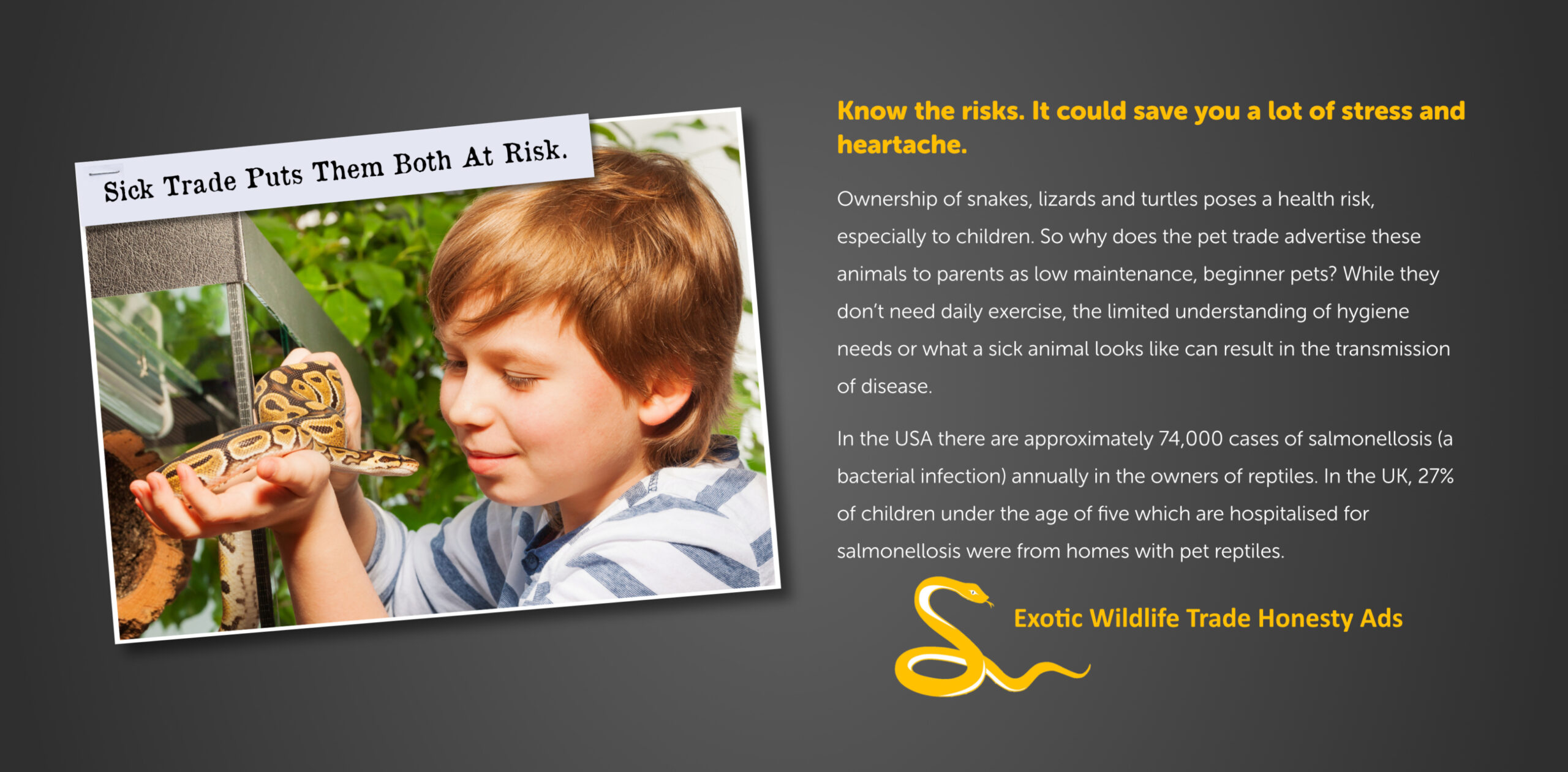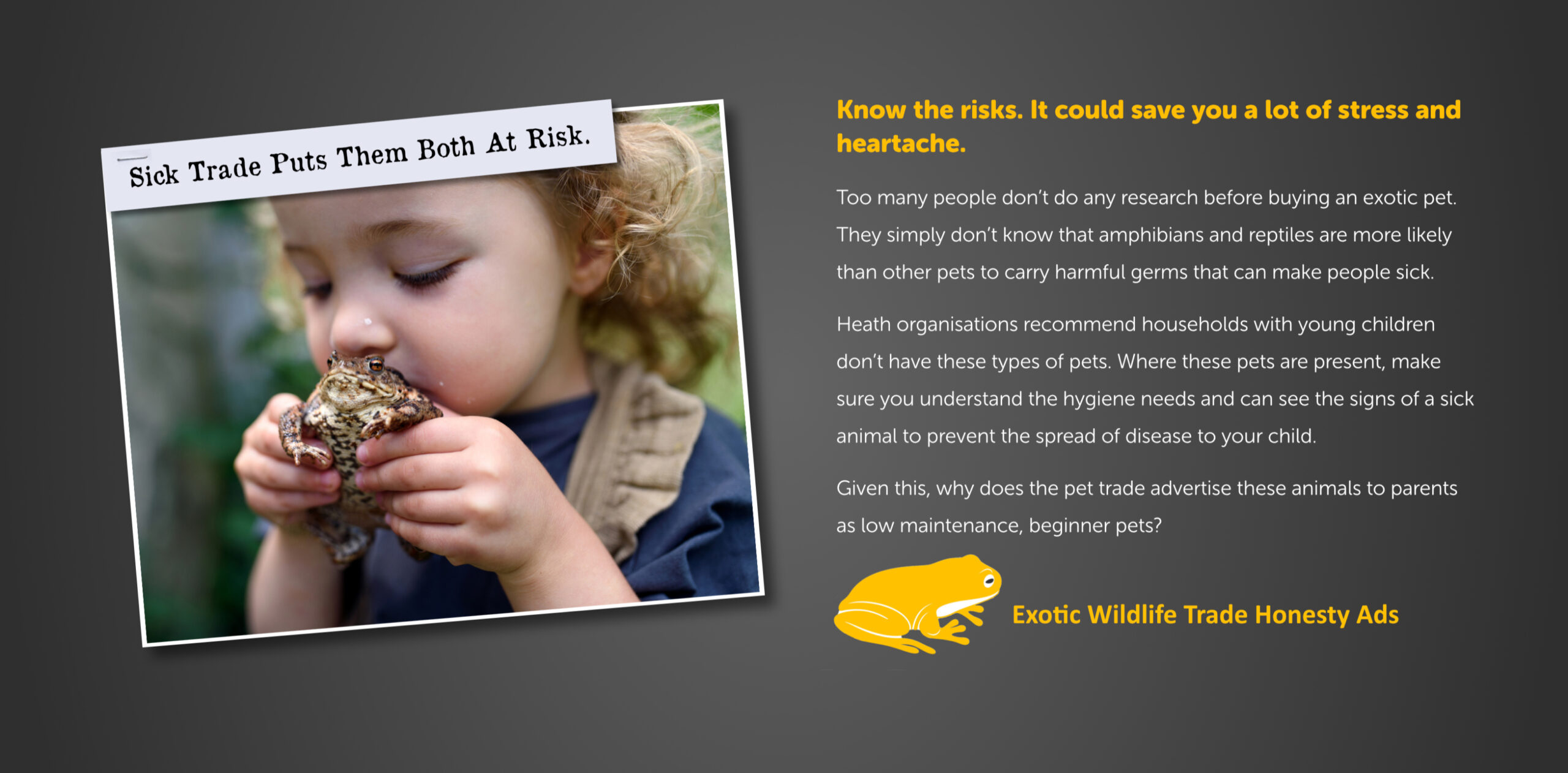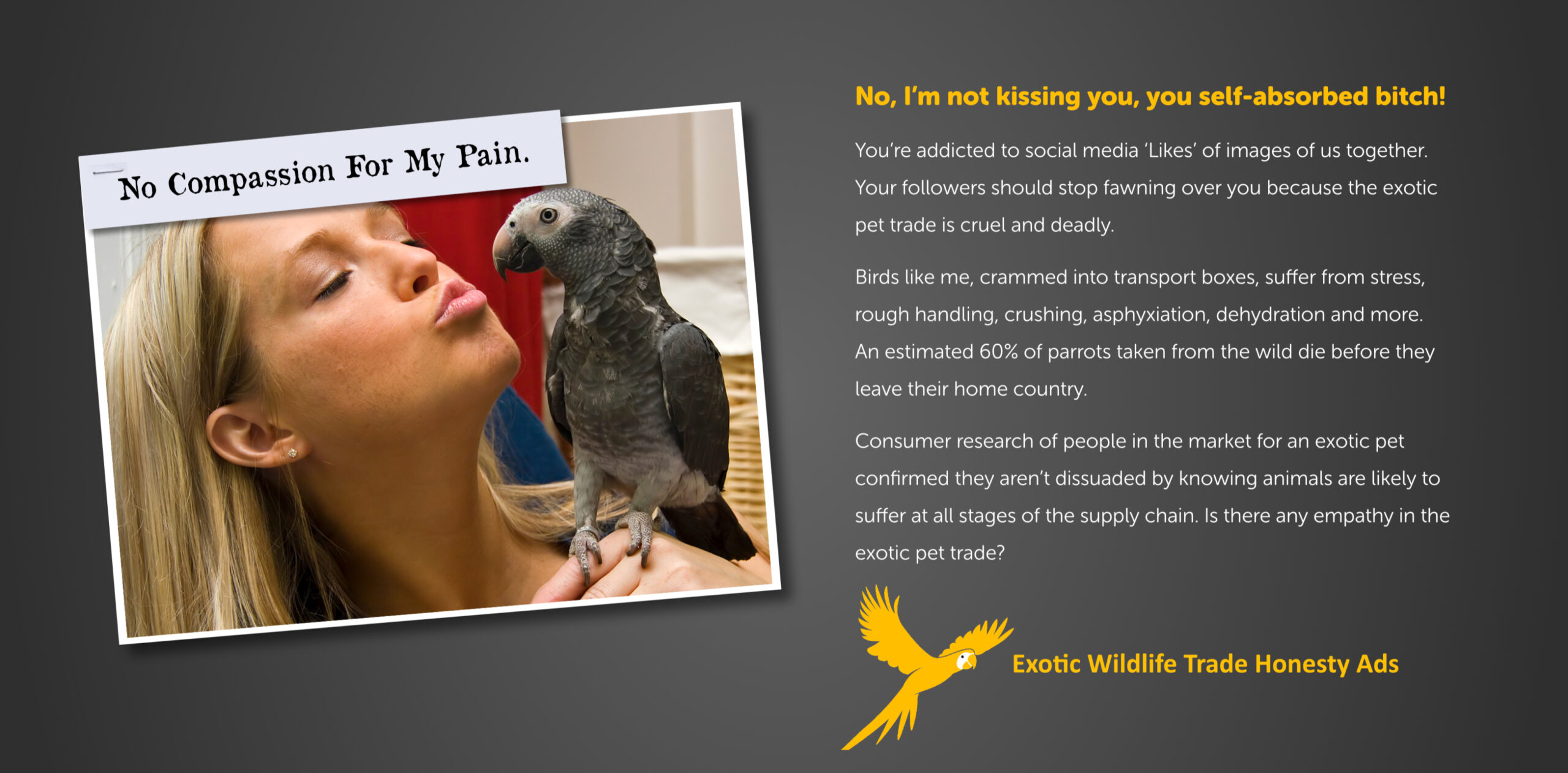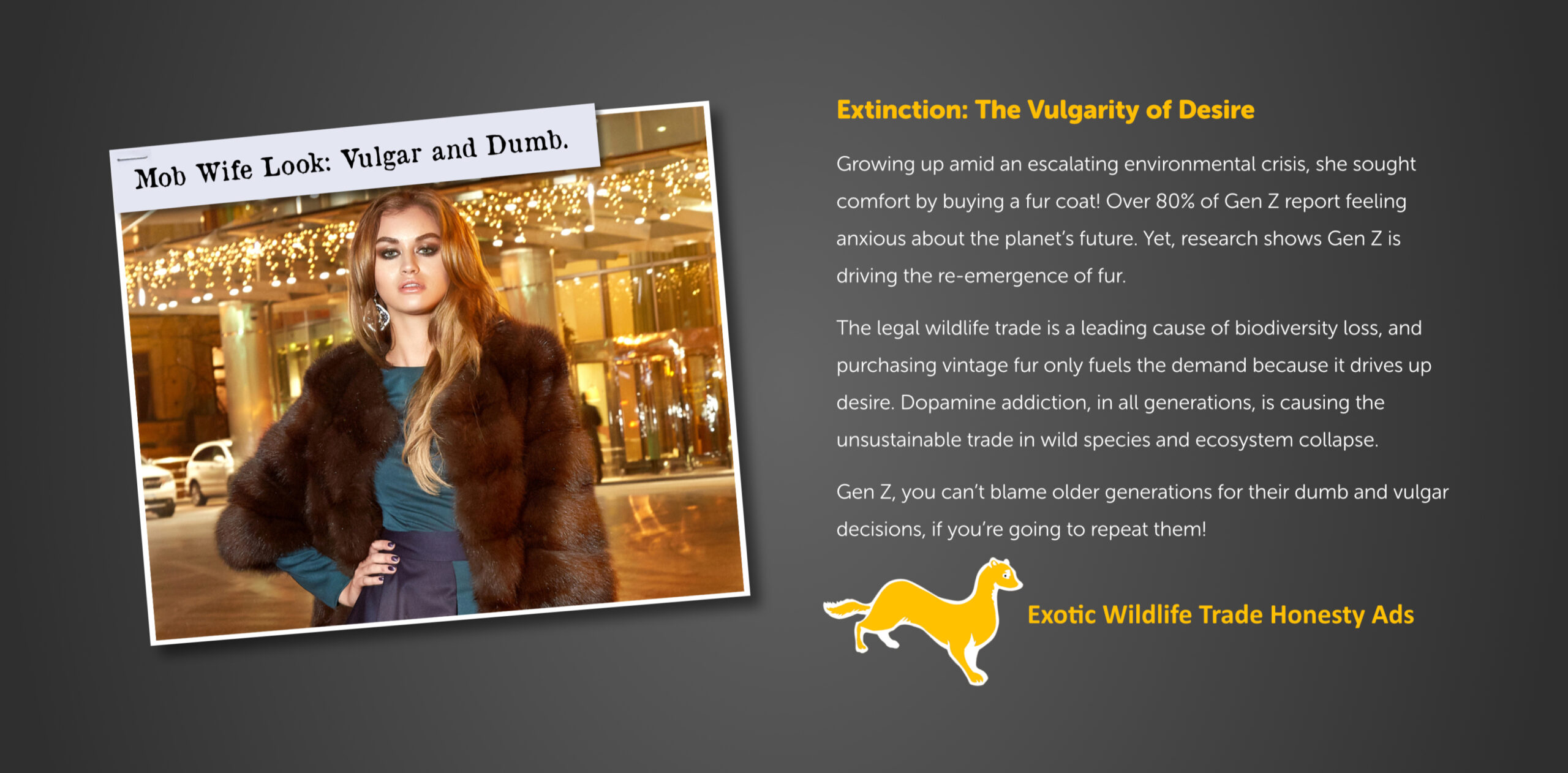One might assume that because the exotic pet trade utilises live animals and many of those animals are quite relatable to people, it would be regulated in a fashion to protect these animals from unnecessary harm. This assumption turns out to be wrong, the exotic pet trade is both massive in scale and basically unregulated.
High mortality rates in the supply chain are seen as purely the cost of doing business, not animal cruelty. The lack of empathy for the animals being (mostly) harvested from the wild pervades every part of the trade – suppliers, wholesalers, retailers, online traders, owners, regulators, politicians. The numbers are staggering, even with the little data on this trade that are actually being collected.
The trade is both completely commoditised and entirely an unnecessary, luxury trade. Today, everyone living in a wealthy country has both the money and time needed to keep exotic pets and acquisition is just one click away.
Social media has further turbo-charged the potential status gain of owning exotic pets by creating the perfect platform for showing off to one’s peers. It has also turbo-charged the trade, both through the need for new content to be created constantly and by making it easy to both legally and illegally acquire any animal you might want. The bar for acquisition of even rare or protected species traded as pets is somewhere between very low and non-existent.
While regulation of the exotic pet trade is desperately needed and long overdue, demand reduction campaigns are another avenue that can be used to help drive down this entirely unnecessary, luxury trade. In the main, the only ways to change consumer behaviour in relation to the consumption of wild species is to trigger:
- Status anxiety – consumer is rejected by their peer group or group they aspire to be a part of
- Health anxiety – consumer is worried about health implications of buying the ‘product’
In addition to these main reasons, in some cases for the illegal trade in wild species, some consumers in some countries may be worried about the implications of being caught. But it is important to remember that many consumers of illegal wildlife products feel above the law, basically because they often are.
Addressing consumer demand also means threatening the companies involved in the trade. The only way to change their desire to supply is if they lose money, the profits became too marginal, or brand value is lost in selling the ‘product’.
Hence both consumers and the supplying companies need to lose status as part of a well-designed demand reduction campaign. With these in mind, and by way of an example, Nature Needs More has created the Wildlife Trade Honesty Ads Campaign.
With each of the adverts we create, we have outlined a separate campaign brief to set the tone for successful project execution, including how a success outcome will be measured. In the case of the Wildlife Trade Honesty Ads campaign, the measure of success is if the desire to supply and/or the desire to consume by the key user groups are reduced. In the medium to long term this would translate into a reduction of extraction of these animals from the wild.

The Creative Brief for this advert outlines that the purpose of the ad is to raise valid doubts about the safety of buying reptiles and amphibians as exotic pets, particularly for children. The advert highlights the risks, including those confirmed by research.
Key is the advert triggers health anxiety for the parent, grandparent or family member who may be considering buying an exotic pet for a child.
Single, most important message of this campaign: Buying reptiles or amphibians as exotic pets isn’t worth the risk – I have to be a good parent and keep my kids safe.
The published research used to create the advert included:
- First Report of Human Infection with Salmonella enterica Serovar Apapa Resulting from Exposure to a Pet Lizard
- A Review of Salmonella and Squamates (Lizards, Snakes and Amphisbians): Implications for Public Health
Parents can also be pointed to websites such as that of World Animal Protection Canada who have started to map wildlife related incidents in the country, including salmonella outbreaks and Public Health Notices.
The pet trade often advertises reptiles and amphibians to parents as beginner pets, that are ‘low maintenance’. While the U.S. Centers for Disease Control and Prevention (CDC) states, “reptiles and amphibians are more likely than other pets to carry harmful germs that can make people sick”.
The RSPCA – UK commissioned a report, Understanding The Motivations Of Beginner Reptile Owners. One reason for commissioning this research was because of the growing number of reptiles the RSPCA has been called to, “left to fend for themselves having been abandoned in parks, stairwells and alleyways, or living in waterways”.
While better regulation and enforcement of the legal trade is ultimately required, consumer demand reduction campaigns can play a role. But demand reduction campaigns have limitations.
Other adverts in this series include:


Social Media: Self-Absorbed Bitch
When it comes to status anxiety…

Mob Wife Look: Vulgar and Dumb
And it isn’t only about the exotic pet trade…

